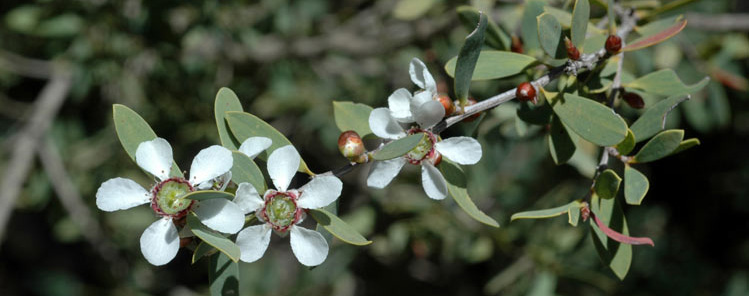The Minister for Sustainability, Environment and Conservation has declared five additional introduced weed species under the Natural Resources Management Act 2004 (NRM Act). This prohibits these species from sale throughout South Australia.
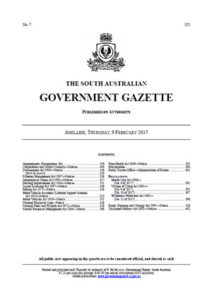 Introduced species are declared under the NRM Act if they pose a threat to primary industries, natural environments or public safety. The new additions were included as part of a review of the NRM Act, conducted by Biosecurity SA in conjunction with the eight Natural Resources Management boards. Other stakeholders in SA were also consulted including the State Herbarium of South Australia. The review of the NRM Act is to maintain the relevance of polices and declarations, and the final changes were officially gazetted in the South Australian Government Gazette 7: 368-382 on 9 February 2017 (2.5mb PDF). This now completes the review of the declared plant schedules and polices, a procedure that was begun in 2010.
Introduced species are declared under the NRM Act if they pose a threat to primary industries, natural environments or public safety. The new additions were included as part of a review of the NRM Act, conducted by Biosecurity SA in conjunction with the eight Natural Resources Management boards. Other stakeholders in SA were also consulted including the State Herbarium of South Australia. The review of the NRM Act is to maintain the relevance of polices and declarations, and the final changes were officially gazetted in the South Australian Government Gazette 7: 368-382 on 9 February 2017 (2.5mb PDF). This now completes the review of the declared plant schedules and polices, a procedure that was begun in 2010.
The five additional introduced weedy plant species that have been added to the Declared Plant List, now prohibited from sale throughout South Australia to prevent further spread, are:
Alisma lanceolatum With. (alisma) is an emergent perennial water weed with large broad leaves and herbaceous flowering stems that is produced from a short underwater rhizome. It is found at a few localities in the Southern Lofty region of South Australia. However, caution should be exercised if controlling suspected infestations, as A. lanceolatum closely resembles another widespread and similar looking native species, Alisma plantago-aquatica. Detailed descriptions of the two species and identification keys can be found in a paper by John Conran (900kb PDF).

Alisma lanceolatum, habit (left) and close-up of flower (right). From J.G. Conran, J. Adelaide Bot. Gard. 25: 14 (2012), Fig. 1D, F.
Arundo donax L. (giant reed) is a large perennial cane grass of stream edges and wetlands, native to Eurasia and naturalised locally in South Australia. Giant reed is highly sterile and clumps spread slowly by underground rhizomes producing successive stems and forming a dense monoculture. Clumps can be spread to new areas when stems or rhizomes are moved in soil or garden waste to other suitable locations.
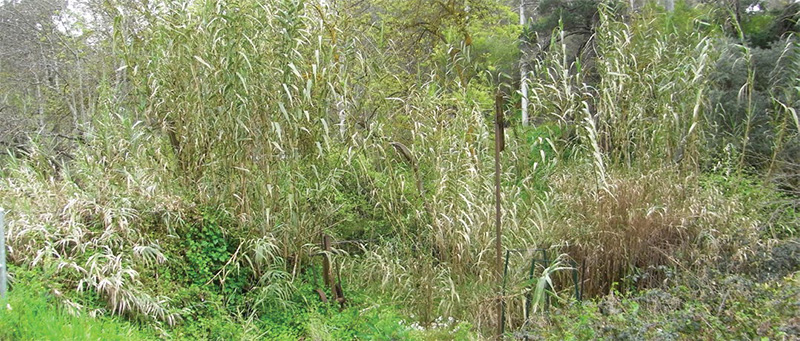
Arundo donax infestation in the Adelaide Hills. Photo: Biosecurity SA.
Leptospermum laevigatum (Gaertn.) F.Muell. (coastal tea-tree) is a shrub or small tree adapted to coastal habitats, introduced to South Australia from eastern Australia. In areas where coastal tea-tree has invaded, it has been observed to have a competitive impact on other native shrubs. Coastal tea-tree was widely planted during the twentieth century and is now naturalised in South Australia and is often assumed to be native with local residents not realising it is a weed. A related native species is L. lanigerum.
Myriophyllum aquaticam (Vell.) Verdc. (parrot feather) is a submerged aquatic plant growing from a rhizome in shallow fresh water. It has been introduced to South Australia as an aquarium plant. Parrot feather is found growing in shallow waters on muddy substrates. It interferes with the flow of water in streams, recreational freshwater fishing and other recreation. Stems may float out over water surfaces to form dense tangled rafts of plant material, from which the emergent shoots arise to give an impenetrable mat that competes with native aquatic plants for habitat.
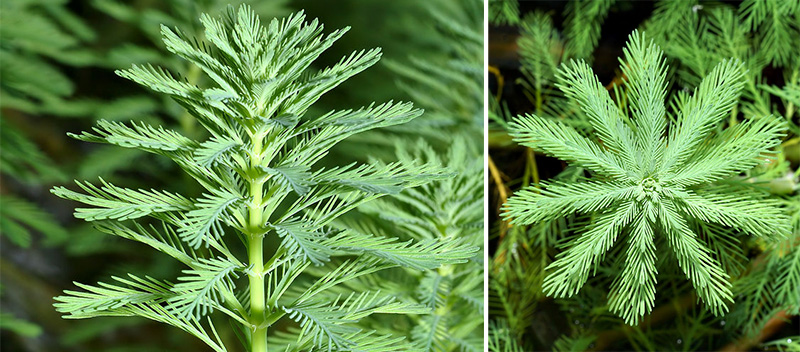
Myriophyllum aquaticum, view of plant from side (left) and from top (right). Photos: André Karwath from Wikimedia CC-BY-SA.
Trachyandra divaricata (Jacq.) Kunth (dune onion weed) is a sandbinding perennial of coastal dunes, introduced to South Australia from southern Africa. Dune onion weed is perennial and reproduces by seed. Seed can be spread when dry plants break off and are rolled along beaches by the wind. Dune onion weed can be toxic to livestock, causing photosensitisation. This has occurred in Western Australia on coastal dunes that were used for pasturing cattle.
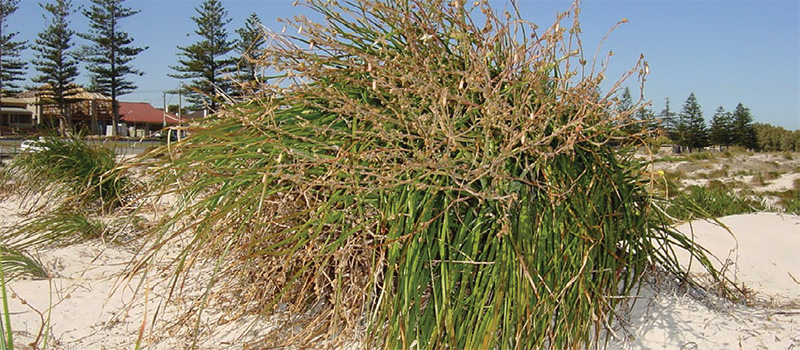
Trachyandra divaricata on the beach. Photo: AMLR/DEWNR.
Distribution maps for the species, based on State Herbarium records, can be found through the eFloraSA web-site (use the Census search function) or Australia’s Virtual Herbarium. Some of these plants have been in the horticultural trade as garden or aquarium plants.
 A poster with a full list with images and descriptions of all recent new plant declarations in South Australia is available here (3mb PDF).
A poster with a full list with images and descriptions of all recent new plant declarations in South Australia is available here (3mb PDF).
To ensure correct management of weeds a positive reliable identification is required. The State Herbarium of South Australia’s Weeds Botanist Chris Brodie can offer identifications of these or any other suspected weeds to confirm their identity. This ensures that the correct taxa are targeted for control measures.
Please contact Chris Brodie by email or phone (08 8222 9468) for further information on the identification of weeds.
Contributed by Chris Brodie, Weeds Botanist, State Herbarium.

